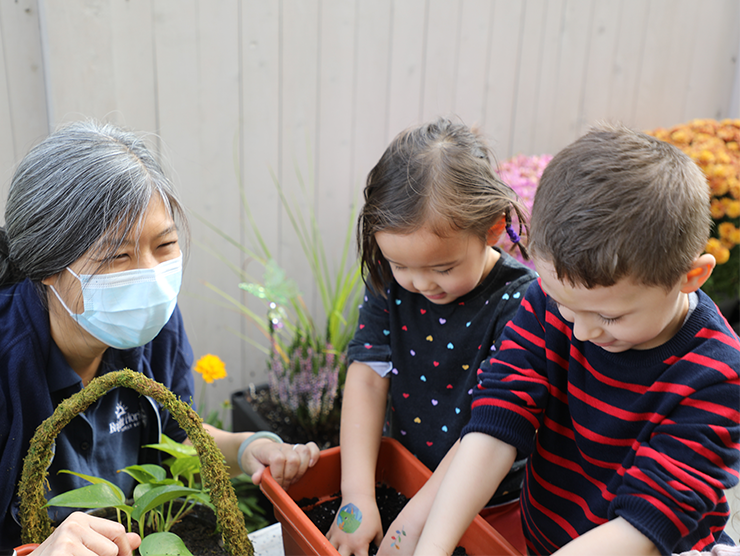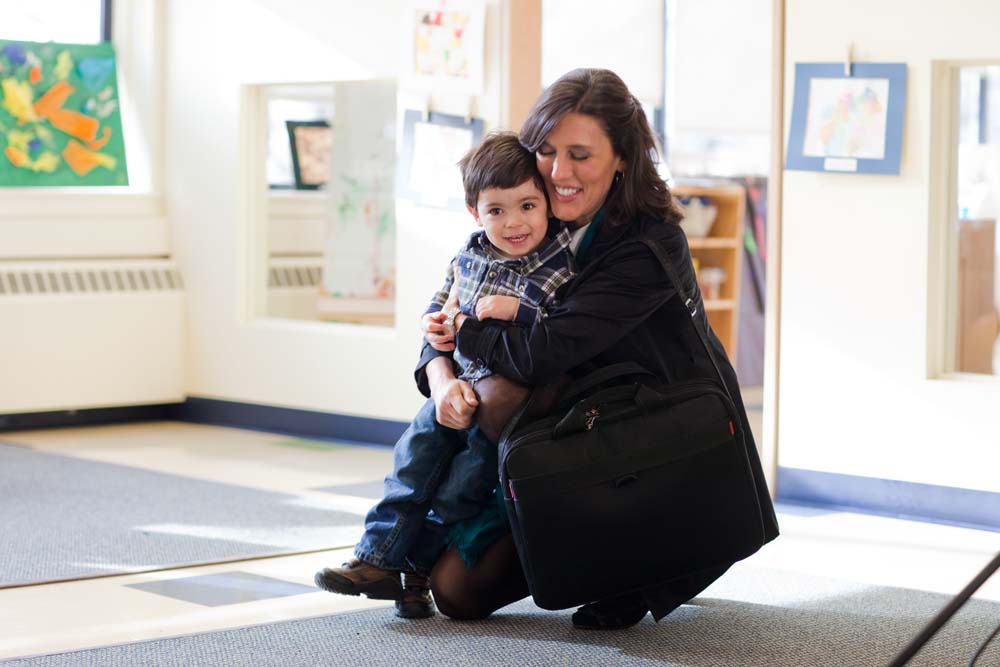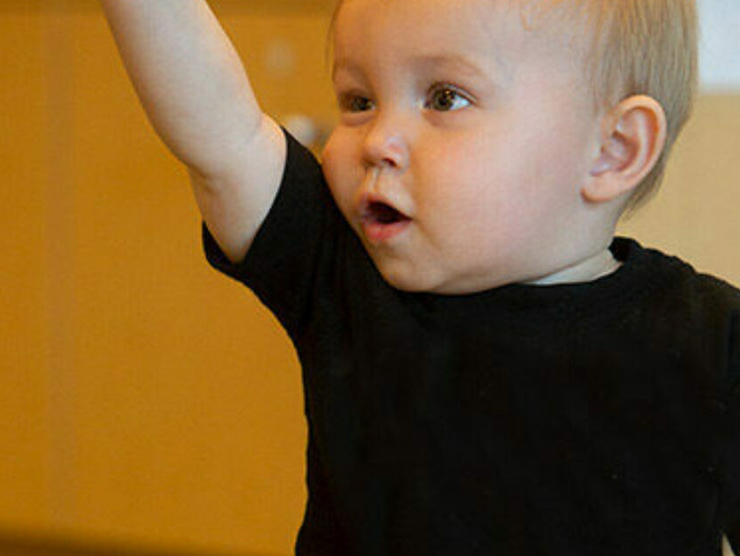Visiting centers, either virtually or in-person is one important step in finding the right child care program for your family. Hearing from current parents about their experiences at the program is another. Below are additional important factors when looking for a quality child care program.
- Health and safety
- Responsive, caring teachers
- Early education and curriculum
- Classroom environments
- Partnership with families
- Center location
- Local licensing and accreditations
Health and Safety
Nothing is more important than your child’s health, safety, and well-being. When evaluating child care, you want to make sure you learn about all health and safety protocols — including exclusion policies and health screenings — and confirm that the practices align with CDC, state, and local guidance. Additionally, find out if the child care program consults with any medical experts.
Be sure to read up on the child care program’s specific rules and measures for face coverings, class sizes, handwashing, distancing, and sanitizing. Day to day, you’ll also want to know how children are supervised, how many teachers accompany the group, and how illnesses and injuries are managed.
Responsive and Caring Teachers
Teachers are at the heart of any child care program. The tone of their classroom should be calm, yet busy. The younger the children, the more often teachers should be on the floor engaging at their level. But teachers for all ages should be frequently talking and interacting with children, always using a pleasant tone. When evaluating child care for your family, learn more about the teachers in the program; and ask about hiring, training, education opportunities, and retention practices.
Early Education and Curriculum
Infant programming should be completely personalized to each baby’s needs. Classroom experiences should provoke curiosity and provide for open-ended exploration alongside the guidance of teachers. Early learning curriculum should be designed to both meet the interests and developmental needs of each age group, and address critical social and emotional competencies.
Classroom Environments
The early childhood years are unique, and the classroom environments should be uniquely designed for this joyful stage. Look for furniture that’s appropriately-sized for the youngest of children; carefully selected elements that consider safety; and materials that make the classroom feel less like a mini-elementary school, and more like home. Additionally, there should be soft, clean, cozy places for quiet time; ample space for children to move and explore; and the room to be socially distant when necessary.
Partnership with Families
The program you select should welcome all families. Beyond just inclusive practices and policies, the center should proactively engage voices via parent partnership groups, and welcome open, ongoing dialogue via live or virtual events and conversation.
Center Location
Carefully considering your ideal center location can help narrow the field. Does your employer offer an onsite option you should consider? Is your ideal location near your home or near your company’s office? Is there a partner’s workplace you need to factor in? It is important to you to cultivate friendships with children and families who live nearby?
Local Licensing and Accreditations
All child care centers must be licensed by the state in which they reside. Licensing certificates should be visible in the center. Ask about additional certifications and accreditations that reflect a center’s commitment to even higher quality standards than those recommended by government agencies and regulations.
Industry Resources
- The National Association for the Education of Young Children (NAEYC) is a national non-profit organization that provides guidance, standards, and research about early childhood and child care
- Child Care Aware is a national non-profit focused on child care information, referral, quality, and safety
More on Choosing Child Care
- Many early childhood centers offer both preschool and pre-kindergarten. Learn about their similarities and differences.
- Finding a quality preschool or child care provider can be daunting. Here are some tips that will help you find the right preschool for your child's needs.





